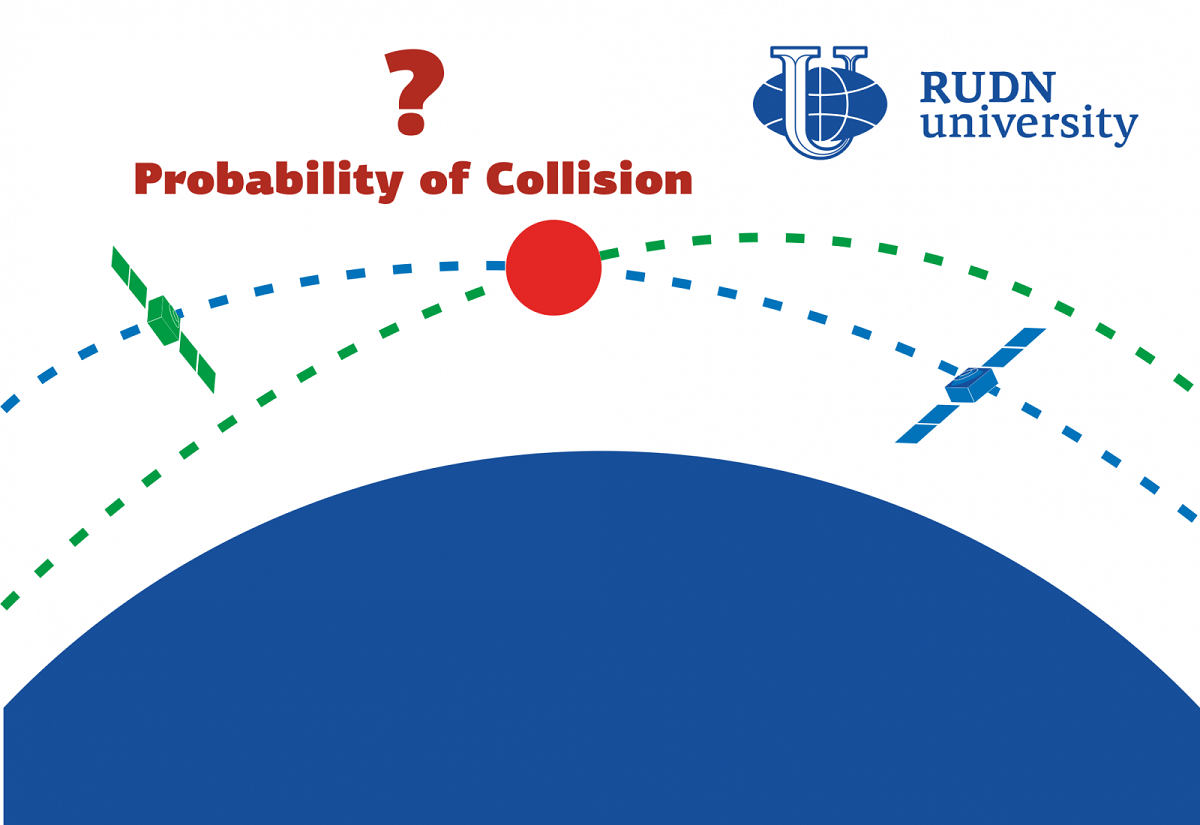RUDN scientists have shown how much considering the real shape of the satellite affects the probability of collision of two space objects

Every year, space mission control centers register up to 70 potentially dangerous spacecraft rendezvous. To avoid collisions, they create specializedsystems, but they calculate the probability of collision with some assumptions. For example, objects are considered to have spherical shapes, their velocities are determined without errors, and so on. These assumptions reduce the accuracy of calculations.
“The assumptions of these approaches can significantly affect the magnitude of the probability of collision. For example, the assumption that space objects move in a straight line within the rendezvous interval does not allow us to estimate convergences, the duration of which takesa long time. Other assumptions also make a significant contribution to the error of calculations. You can remove these limitations by resorting to statistical modeling methods,”- Maxim Karatunov, Candidate of Technical Sciences, Associate Professor of the Department of Mechanics and Mechatronics, RUDN University.
RUDN scientists considered a model that takes into account the real shape and orientation of space objects. The probability of collision was found using static modeling using the Monte Carlo method. Its essence lies in the use of a random variable generator and multiple calculation of themodel, and the results obtained determine the probabilityof theprocess, in this case — the collision. Scientists used the model to calculate the probability of collision of two real objects, Chinese geostationary satellites CHINASAT-20 and SHIJIAN-17.
The chinaSAT-20 and SHIJIAN-17 satellites approached on March 16, 2018 by 286.3 meters. To test the algorithm, the scientists first calculated the probability of a collision without taking into account the real form (believing that both satellites look like spheres), and then repeated the calculations with a more realistically approximate form. Scientists used a generalized model of the satellite — the body and “wings” of solar panels. Batteries for simplicity were presented in the form of cylinders, given that they have only one degree of freedom (that is, they can rotate around the axis of this cylinder). The researchers also took into account the orientation of the object — the main axis is directed to the Earth, and the axes of the cylinder-batteries are perpendicular to the plane of the orbit. The probability of a collision was five times less than in the classical calculation.
“The probability of collision of space objects is the main value that affects the decision to maneuver. The safety of space flights depends on the accuracy of the assessment of this value. We have developed a method for calculating probability, which allows usto take into account the shape and orientation of converging objects, as well as remove a number of classical assumptions. It was demonstrated that ignoring the real shape of objects significantly affects the accuracy of the assessment, for the test example, a five-fold discrepancy in the results was obtained,”- Maxim Karatunov, Associate Professor of the Department of Mechanics and Mechatronics RUDN University.
The results are published in the journal Cosmic Research.
Matilda Pavlovna Mityaeva was born in 1925. In November 1942, she volunteered for frontline duty. She participated in the Great Patriotic War from November 1942 to June 1945 as part of the 53rd Infantry Division of the 475th Infantry Regiment. She was wounded twice.
The team led by Sergey Zyryanov, Head of the Department of General and Clinical Pharmacology, became the winner of the All-Russian competition of scientific projects "Technologies for Human Health".
RUDN University constantly adapts to the changes of the modern world and responds to challenges flexibly. This allows us to keep the standard of a world-class research university. The sphere of science is no exception. Peter Dokukin, Head of the Research Division, presented the updated R&D Programme at the meeting of the RUDN University Academic Council.
Matilda Pavlovna Mityaeva was born in 1925. In November 1942, she volunteered for frontline duty. She participated in the Great Patriotic War from November 1942 to June 1945 as part of the 53rd Infantry Division of the 475th Infantry Regiment. She was wounded twice.
The team led by Sergey Zyryanov, Head of the Department of General and Clinical Pharmacology, became the winner of the All-Russian competition of scientific projects "Technologies for Human Health".
RUDN University constantly adapts to the changes of the modern world and responds to challenges flexibly. This allows us to keep the standard of a world-class research university. The sphere of science is no exception. Peter Dokukin, Head of the Research Division, presented the updated R&D Programme at the meeting of the RUDN University Academic Council.